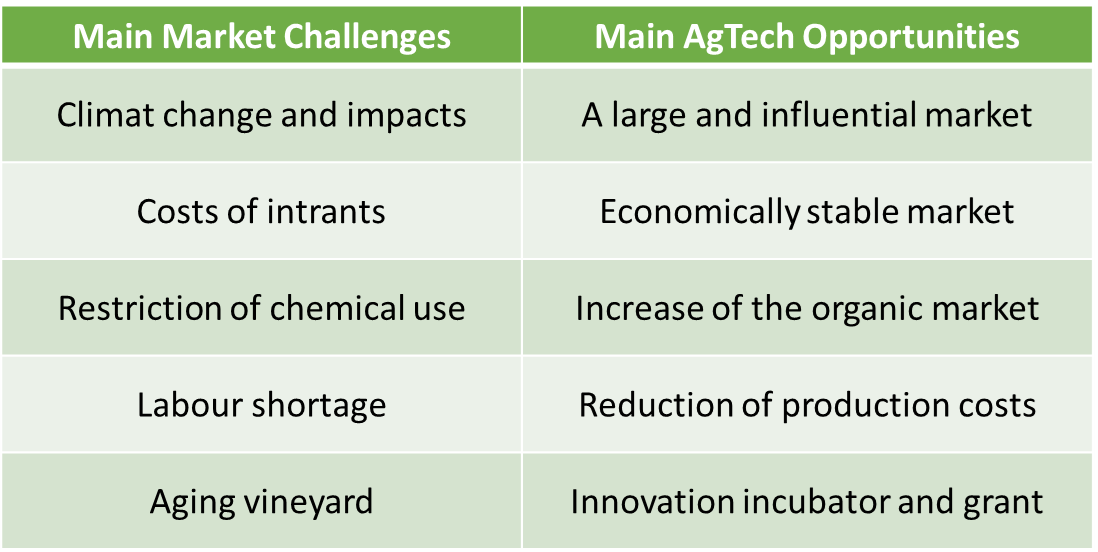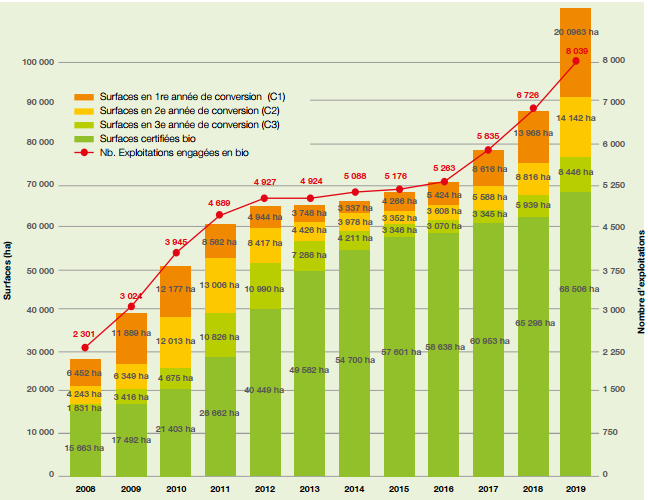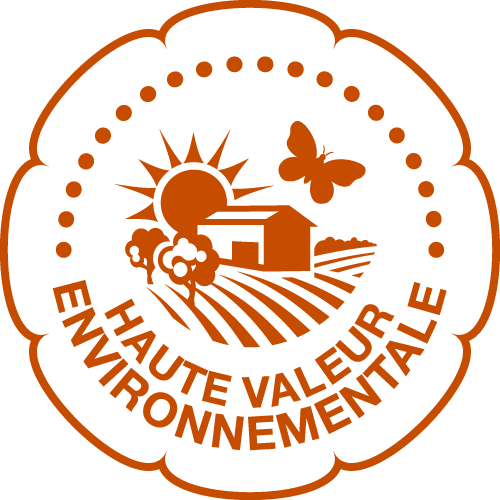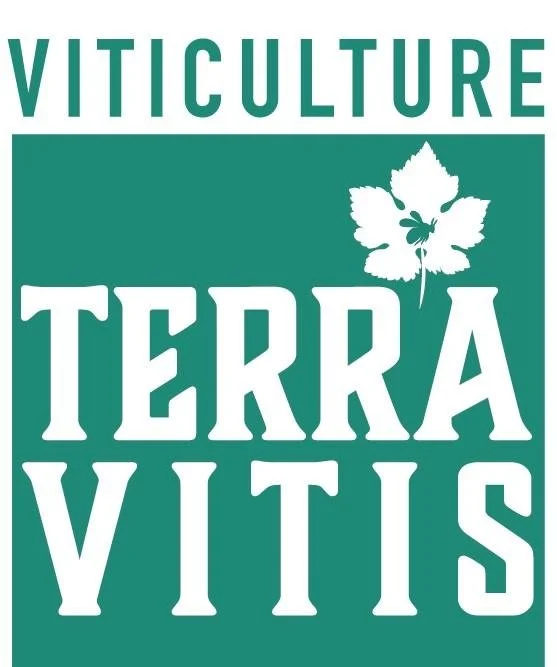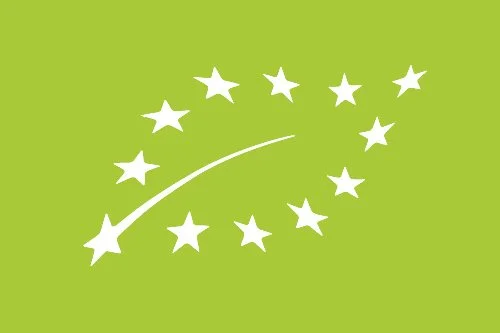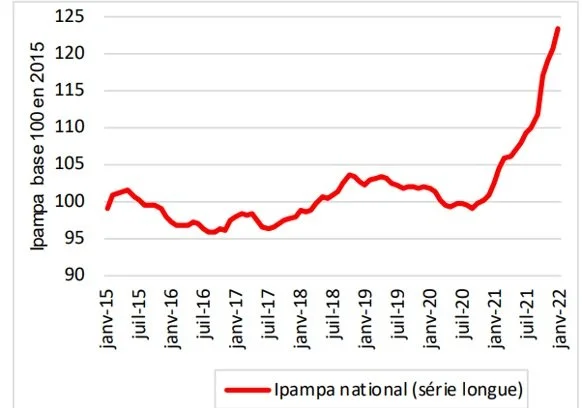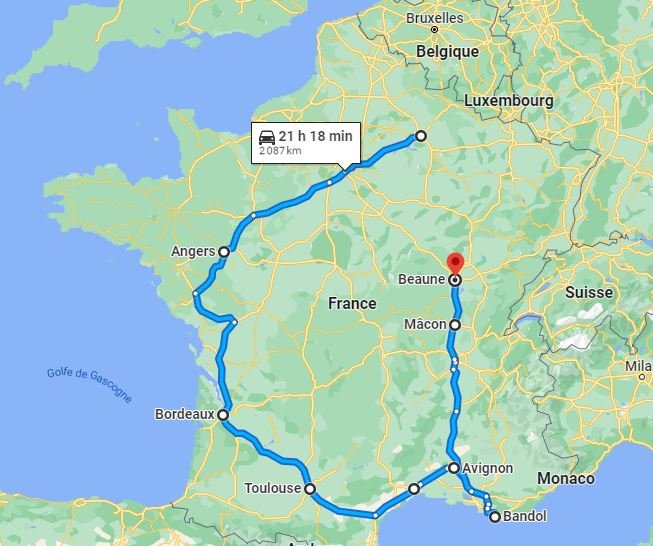Exploration of the French vineyard : Understanding the most influential vineyard of the world
“A historic market with a new dynamic”
France is one of the countries with the longest history and culture of making wine, and the figures reflect the importance of this heritage. But for the last few decades, this vineyard has been in transition due to climate change, limitation of phytosanitary products, increase in the price of raw materials or the decline of the vine. The challenges faced by the French vineyard are more and more impactful, and the new agricultural technologies and winegrowers have a role to play in this transition.
summary of the French vineyard study by AgTech Market
Introduction
Since I am conviced that to understand growers needs and the functioning of the market, nothing is better than getting out in the field and talking to those who know their field best, the growers ! In June 2022, I am going to explore the main French wine regions. Who has never dreamed of doing the Tour de France of the vineyards ? Nobody ! Unfortunetely, the main objective of this expedition is not to taste all the wines that this land offers. Indeed, if I intend to visit all these vineyards, it is above all to better understand their functioning, their differences and the challenges they face.
In this article, I will present you the French vineyards with figures, but also the challenges it is facing and its AgTech opportunities. Then I will also present you my project, its objectives and why you should not miss this unique opportunity to understand the market from the inside.
Reims, France, Photo from Seb
THE IMPORTANCE OF THE FRENCH VINEYARD
According to the International Organisation of Wine (IOW), France is the second wine producer in volume, but the first business dealer of wine in value with a worldwide market share of 29%. For the French Government, the wine industry in France is the nation’s second-largest export sector, and it directly or indirectly employs more than 558,000 people. Nowadays, the reputation of French wines is well established, since more than 30% of the wine produced in France is exported to the world market, 54% of which is sold to other European countries.
KEY FIGURES
Vineyard area : 800,000 hectares | 2,000,000 acres
24% of the European vineyard area
11% of the world's vineyards area
17% in organic
59,000 wine-growing operation | 560 000 employement
To have a better otherview of the world global wine producing markets.
CHALLENGES AND OPPORTUNITIES
Between climate change, limitation of phytosanitary products, increase in the price of raw materials or the decline of the vine, the French vineyard is undergoing the full force of the challenges of the 21st century. But then how does this market adapt? What are the opportunities for innovation?
The rise of a more sustainable production
The sector has shown it can change to meet consumer and society expectations, and is moving towards sustainable production. Innovation efforts are mainly focused on wine-growing methods, by increasing in quality, reducing energy and input consumption...
Evolution of the organic vineyards in France
In the last 10 years, the organic or byodinamic surfaces have tripled, going from 40 000 hectares in 2009 to 120 000 hectares in 2019. Driven by the demand of the European market, the organic sector is getting better and better organized, and continues to gain market share with the implementation and consolidation of labels and certifications.
High Environmental Value (HEV)
This label is based on indicators measuring the environmental performance of farms.
-Preservation of biodiversity
-Phytosanitary reduction strategy
-Fertilization management
-Irrigation management.
Terra Vitis
This French environmental certification dedicated to the wine sector is based on the three pillars of sustainable development :
-Environmental Commitment
-Social Responsibility
-Economic Sustainability
The French Label
To have this label, a winegrower must :
-Have organic certification for all of their grapes
-Have a farm outside of areas exposed to industrial pollution or pollution from intensive farming
The European Label
This regulation bans :
-Synthetic products as pesticides, chemical fertilizers
- Imposes certain restrictions in terms of winemaking
-Lowering of the maximum doses of sulfites.
The percentage of vineyards converted to organic will further increase in the coming years, and if winegrowers want to maintain the same quantity and quality of production they will have no choice but to find new ways of working.
A market that is modernizing and adapting
Since the arrival of new world wines on the market, French and European wines no longer have a monopoly on the world market. These newcomers have broken the codes by offering much more affordable wines. Even if some exceptional regions have decided to stay with manual and old-fashioned vineyard work, other regions are turning to new technologies in order to maintain coherent production costs. For a decade, the market has been modernizing to greater efficiency and profitability. Robotics solution, on-board electronic systems for tractors, drones, mechanization of the vineyard, precision farming ... all technologies are welcome as long as they can improve production costs and product quality, while preserving the vineyard.
Precision farming, Photo from FarmAIr
More recently, the various global crises have led to a considerable increase in the price of raw materials and chemical inputs.
Evolution of the PPIAI index
The purchase price index for agricultural inputs (PPIAI) measures the variations in purchase prices borne by farms for their production inputs and investment expenses.
With the increase in fertilizers and non-road diesel, farms have been directly impacted.
The increase of these costs has an impact direct impact on the production costs of vineyards. If the crisis persists or intensifies, they risk turning even more quickly to new solutions, such as alternative to chemical fertilizers or alternative to thermal vehicles.
the pressure of climate change
More and more frequent these last years, climatic events are challenging the productions all over the world. After the devastating fires in Australia or California, it is now the French vineyard which suffers from the climate change consequences.
To reverse or limits the impact of the climate change, all the means are good. Wine growers try to find the right solution for frost protection, drought control and sunburn protection. Any technology that will bring an answer to these problems will be welcome in the French vineyard.
Vineyards in the Pyrénées-Orientales, Photo from Sun’Agri
The opportunity to understand the French vineyard
The dates of the project
The expedition will take place during the month of June.
Start : May 29, 2022
Return : June 30th, 2022
Project Objectives
Discover the main French wine regions and their growing specificities
Develop a global and field vision and collect the vision of winegrowers
Meet with winegrowers to discuss: working methods in the vineyard, challenges encountered and rooms for improvement
Present and discuss new agricultural technologies, their integration and their long-term benefits
Itinerary and planning
The itinerary may vary slightly even if the regions are fixed.
May 29th - June 1st : Champagne Region
June 2nd - June 5th : Loire Region
June 6th - June 10th : Cognac and Bordeaux Regions
June 11th - June 14th : South West Region
June 15th - June 19th : Languedoc-Roussillon Region
June 20th - June 25th : Provence and Rhone Regions
June 26th - End : Mâcon and Burgundy Regions
Do not want to miss this unique opportunity to understand this market ?
Are you interested in this expedition in the heart of the French vineyard ? Do you want to learn more about this market to potentially develop your product in the future ? Let me explain you what this project can bring to yours !
WANT TO LEARN MORE ABOUT OTHER MARKETS AND AGTECH OPPORTUNITIES ?
AMERICAN MARKET - 🇺🇸
AUSTRALIAN MARKET - 🇦🇺
CALIFORNIAN MARKET - 🇺🇸
CANADIAN MARKET - 🇨🇦
EUROPEAN MARKET - 🇪🇺
FRENCH MARKET - 🇫🇷



